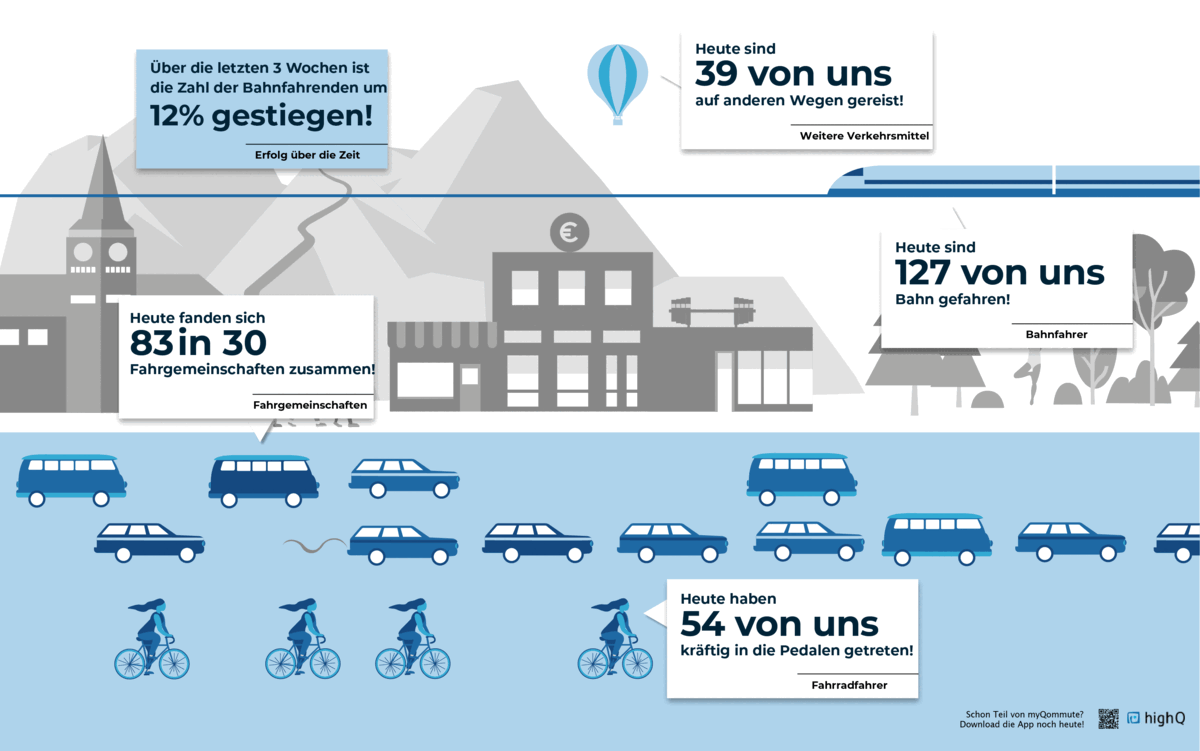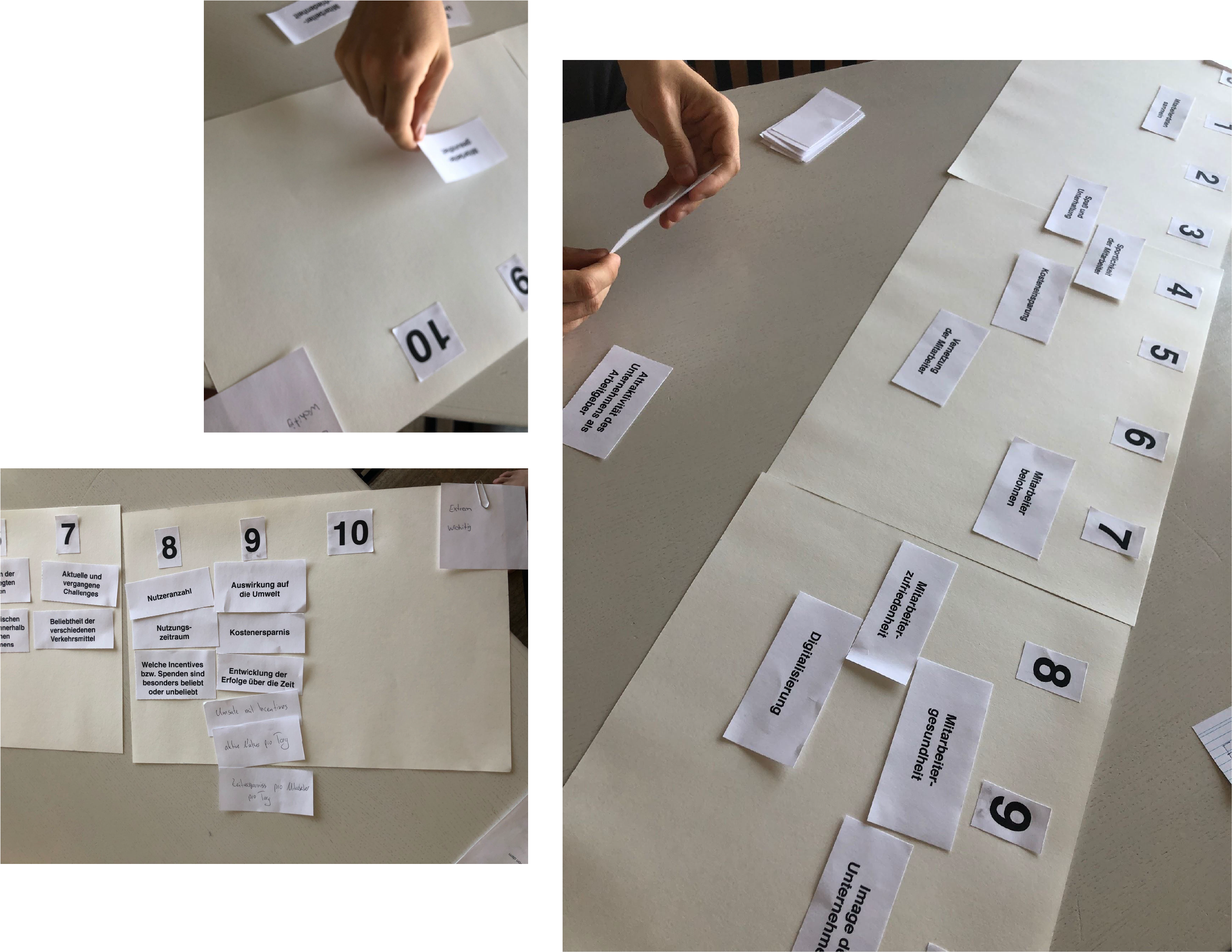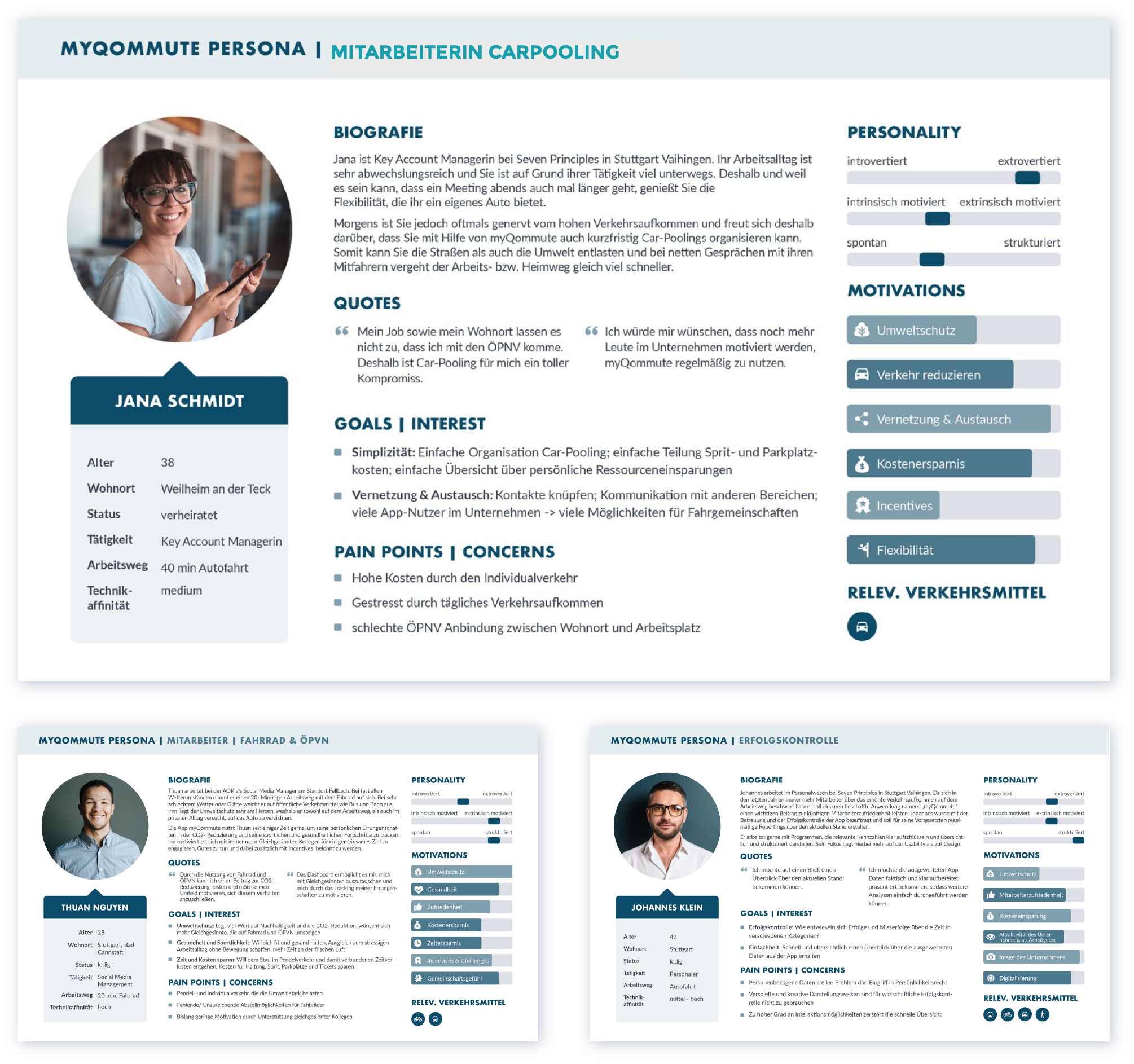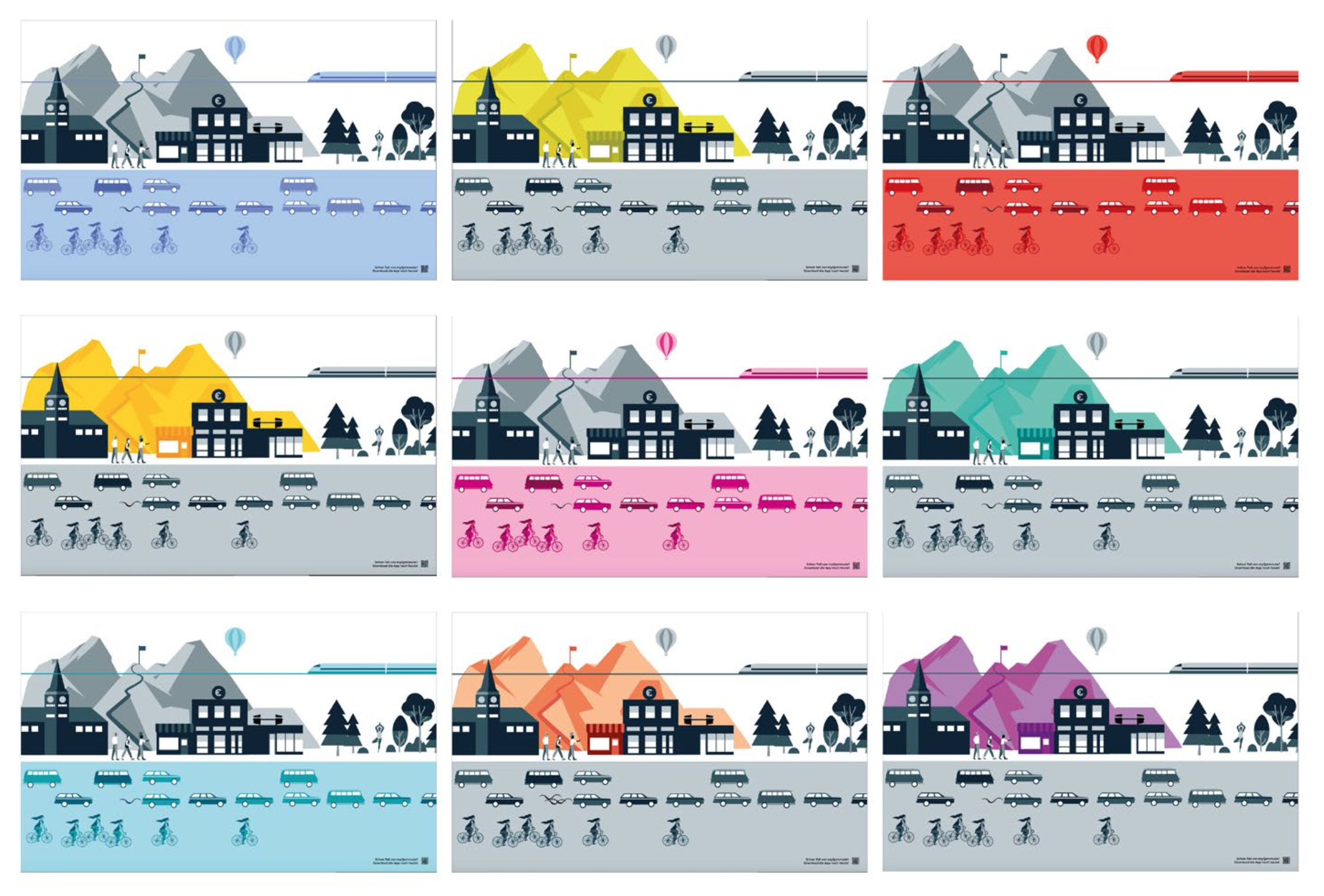Case Study
myQommute Public Dashboard

Project Summary
The software company HighQ is building a white label app that helps employees of a company plan their commute - be it by public transport, biking or carpooling. Our team was charged with building a dashboard monitoring the impact of the commuters’ app.
While the client imagined the dashboard to be used in the controlling department of the company, our user research revealed that this was not what the target group asked for. We therefore built a prototype for a dashboard on public display, showing employees their collective achievements.
Challenge
The myQommute app is a white label solution developed by HighQ. While companies can easily see the price tag that comes with adopting the app, the various benefits are harder to concretize. Our challenge: Design a dashboard that visualizes the benefits of the company’s commuting scheme.
The target user group of this dashboard consists of decision makers in the companies. The client’s vision was a motivating and fun dashboard. Our first goal: Learn more about our target group. Who are they, what is their role in their company? What are their priorities?
Our task was a research-backed prototype, providing the user group with clear usability and positive experiences using the dashboard.
Solution

User Interviews
Qualitative interviews with potential users, including environmental officers and budget analysts, provided insights into tool demands and contextual use. Interactive sessions gauged the relevance of different dashboard data, clarifying essential information for users.
Expert Interviews
Subject matter expert interviews, including an employee advocacy expert and a city administration representative, explored dashboard opportunities and pitfalls. Valuable insights were gained on user wellbeing and highlighting benefits for communities and the environment.
New Scope
“This dashboard could be quite fun and interesting for all the employees to see.”
- One of our interviewees
Systematically categorizing and evaluating the 7 interviews, we shared interviewee requirements with HighQ. A misalignment between the client's initial idea and user needs prompted an adjustment in scope, leading to the development of two prototypes—one public and one individual.
Personas
Building on interview insights, we crafted 3 personas, emphasizing motivations, pain points, and life circumstances. These personas, presented to the client, played a pivotal role in our design process.
Developing a Concept
Understanding the dashboard's role and functions, we visualized the design with a landscape featuring alternating widgets. This allowed visual storytelling while showcasing the positive impact of collective behavior changes. The customizable design aligns with the client's corporate identity.


Results
This project is an interesting example for why a human-centered design process is crucial: HighQ’s initial hypothesis could not be confirmed during our user research. Finding out earlier what the users actually want saved the client money, time and effort.
Our research-based insights and prototype proved valuable to HighQ, who since have continued working on the public dashboard as part of their mobility software suite. They since won multiple awards of innovation and sustainability.